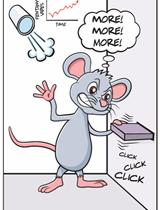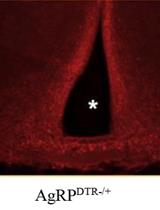- EN - English
- CN - 中文
Fear Conditioning Assay in Mouse
小鼠恐惧条件反射试验
发布: 2013年04月05日第3卷第7期 DOI: 10.21769/BioProtoc.531 浏览次数: 14354
Abstract
The study of fear memory is important for understanding various anxiety disorders in which patients experience persistent recollections of traumatic events. These memories often involve associations of contextual cues with aversive events; consequently, Pavlovian classical conditioning is commonly used to study contextual fear learning. A form of contextual fear conditioning that is becoming increasingly important as an animal model of anxiety disorders uses predator odor as a fearful stimulus. Innate fear responses to predator odors are well characterized and reliable; however, attempts to use these odors as unconditioned stimuli in fear conditioning paradigms have been highly dependent on experimental setup and have produced inconsistent behavioral results. Here we present a contextual fear conditioning paradigm using coyote urine as the unconditioned stimulus, which has been shown to produce consistent contextual freezing in response to fear learning (Wang et al., 2012).
Background
Materials and Reagents
- Mouse C57BL/6, male, 6 weeks to 4 months old (we suggest using mice of a similar age, with ~3 months old being optimal) (Jackson Laboratories)
- Paper towel, cut into 2.5 by 2.5 cm squares
- Scotch tape
- 100% coyote urine (Maine Outdoor Solutions, catalog number: ACOYD )
- Ethanol
- Cleaning solution (409 and/or Clorox Clean-Up)
- Liquid soap
Equipment
- Cylindrical Plexiglas training context 35 cm in diameter and 35 cm tall with a platform base and fitted removable cylindrical wall (custom made by Just Plastics), painted white with 5-6 black distinct visual cues along the wall in basic shapes, each about 10-12 cm in width.
- Camera/computer setup to record animal movement – overhead camera with low lighting levels: Bright enough that the computerized tracking system can track the mouse, but dark enough that the mouse is comfortable exploring the environment.
- Limelight (Actimetrics) or some other such behavioral tracking system
Procedure
文章信息
版权信息
© 2013 The Authors; exclusive licensee Bio-protocol LLC.
如何引用
Readers should cite both the Bio-protocol article and the original research article where this protocol was used:
- Wang, M. E. and Muzzio, I. A. (2013). Fear Conditioning Assay in Mouse. Bio-protocol 3(7): e531. DOI: 10.21769/BioProtoc.531.
- Wang, M. E., Wann, E. G., Yuan, R. K., Ramos Alvarez, M. M., Stead, S. M. and Muzzio, I. A. (2012). Long-term stabilization of place cell remapping produced by a fearful experience. J Neurosci 32(45): 15802-15814.
分类
神经科学 > 行为神经科学 > 学习和记忆
神经科学 > 行为神经科学 > 实验动物模型 > 小鼠
您对这篇实验方法有问题吗?
在此处发布您的问题,我们将邀请本文作者来回答。同时,我们会将您的问题发布到Bio-protocol Exchange,以便寻求社区成员的帮助。
提问指南
+ 问题描述
写下详细的问题描述,包括所有有助于他人回答您问题的信息(例如实验过程、条件和相关图像等)。
Share
Bluesky
X
Copy link












